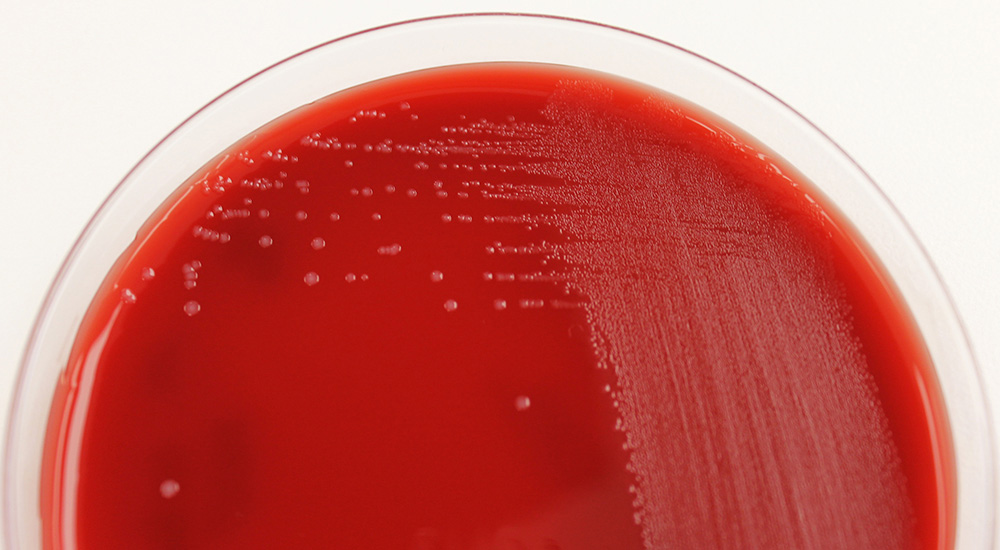Moraxella osloensis isn’t a well-known bacterium outside the laboratory, but this opportunistic human pathogen has been found to cause life-threatening diseases such as endocarditis, osteomyelitis, central venous catheter infection and meningitis.1 M. osloensis is also known to be an environmental isolate in pharmaceutical laboratories.
Colony Appearance: M. osloensis forms small to medium, circular, translucent colonies on non-selective media such as Sheep Blood Agar and Tryptic Soy Agar.
Microscopic Characteristics: Short, plump gram-negative rods.
Conditions for Growth: M. osloensis is aerobic and grows best at 35°C. The bacterium is Gram-negative, oxidase-positive and typically takes 24-48 hours to grow.
Habitat: M. osloensis is a natural mutualistic symbiont of Phasmarhabditis hermaphrodita, a slug-parasitic nematode. M. osloensis is transmitted into their shell cavities where the bacteria multiply and kill the slug.1 M. osloensis also inhabits the environment and is part of the normal flora of skin and mucosal surfaces, particularly the human respiratory tract.4
Pathogenicity: M. osloensis is saprophytic on the skin and mucosa. The species rarely affects humans, but it can cause disease in some tissues, particularly in immunocompromised individuals. Antibiotics are typically effective against the pathogen.1
Environmental Risk: Because M. osloensis can infect humans, screening for this contaminant in cleanrooms is important. Identifying all isolates found through an environmental monitoring program and determining the proper next steps are necessary to ensure consumer safety.
Taxonomy1:
| Kingdom: | Bacteria | Order: | Pseudomonadales |
| Phylum: | Proteobacteria | Family: | Moraxellaceae |
| Class: | Gammaproteobacteria | Genus: | Moraxella |
If you’ve isolated Moraxella osloensis in your laboratory, we can simplify your next steps. Send us your isolate for custom preservation and you’ll receive a QC testing kit designed for your lab with your isolate. Learn more.
References
1 Pathogenicity of Moraxella osloensis, a Bacterium Associated with the Nematode Phasmarhabditis hermaphrodita, to the Slug Deroceras reticulatum (2001) https://aem.asm.org/content/67/11/5010
2 Moraxella osloensis: an unusual cause of central venous catheter infection in a cancer patient (2012) https://www.ncbi.nlm.nih.gov/pmc/articles/PMC3479945/
3 Moraxella Species Are Primarily Responsible for Generating Malodor in Laundry (2012) https://www.ncbi.nlm.nih.gov/pmc/articles/PMC3346475/
4 Journal of Medical Microbiology (2011), 60, 138–141 Sepsis with prolonged hypotension due to Moraxella osloensis in a non-immunocompromised child






With all due respect, please check your sources again. P. hermaphrodita is a nematode not a garden slug. M. osloensis and P. hermaphrodita work together as a pest control for slugs such as D. reticulatum.
Other than that, I enjoy your articles and fun microbiology trivia and pictures.
Thank you for pointing out the error, Megan. We will update the post promptly.